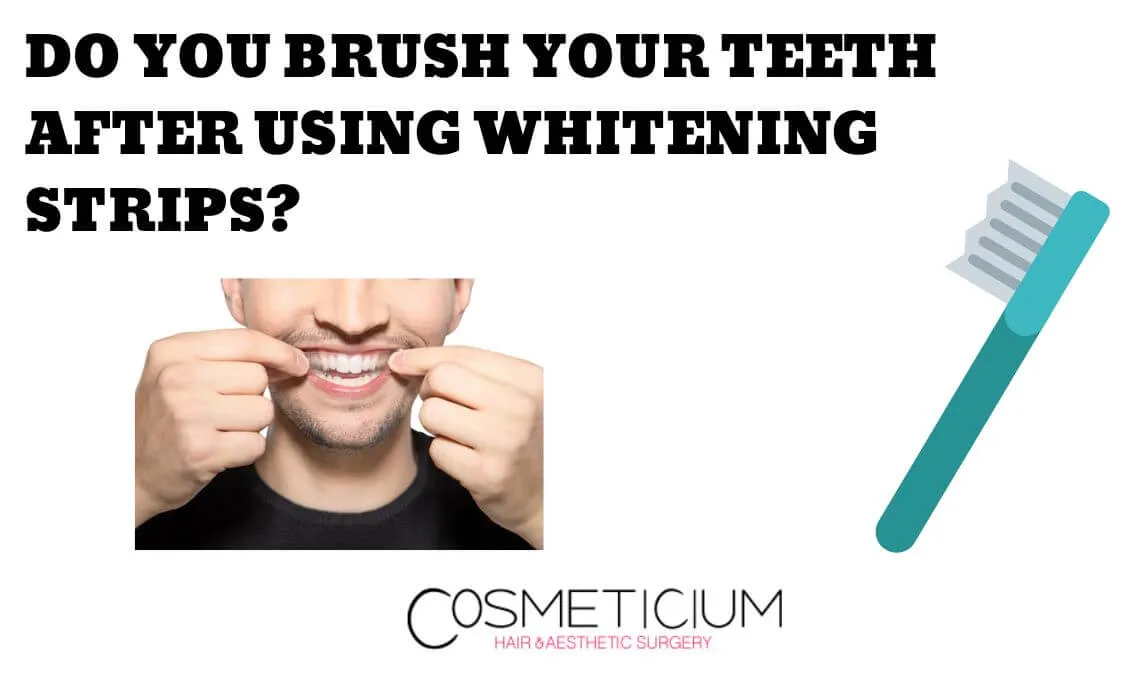Understanding Teeth Whitening Strips
Teeth whitening strips have become a popular and convenient method for enhancing the brightness of your smile. These thin, flexible strips are coated with a peroxide-based whitening agent, typically hydrogen peroxide or carbamide peroxide. When applied to the teeth, the active ingredient penetrates the enamel, breaking down stain molecules and lightening the overall color of your teeth. The ease of use and relatively low cost of these strips have made them a go-to choice for many seeking a brighter smile without visiting a dentist. However, understanding the proper usage and timing of these strips, especially in relation to brushing your teeth, is crucial for achieving optimal results and avoiding potential drawbacks. This article will provide detailed insights into the best practices, helping you make informed decisions to ensure your teeth whitening journey is both effective and safe.
How Whitening Strips Work
The effectiveness of teeth whitening strips hinges on the chemical reaction between the whitening agent and the stains on your teeth. The peroxide in the strips acts as an oxidizing agent, breaking down the organic molecules that cause discoloration. These molecules are often the result of food, drinks like coffee and tea, tobacco use, and the natural aging process. The strips are designed to adhere closely to the teeth, ensuring that the whitening agent stays in contact with the enamel for the specified duration, usually ranging from 30 minutes to an hour. The peroxide penetrates the enamel, reaching the discolored dentin beneath, and gradually lightening the teeth from the inside out. This process is gradual, with noticeable results typically appearing after several days of consistent use, leading to a visibly brighter and more radiant smile. Remember to follow the instructions provided with the strips for the best outcome.
The Science Behind Tooth Staining
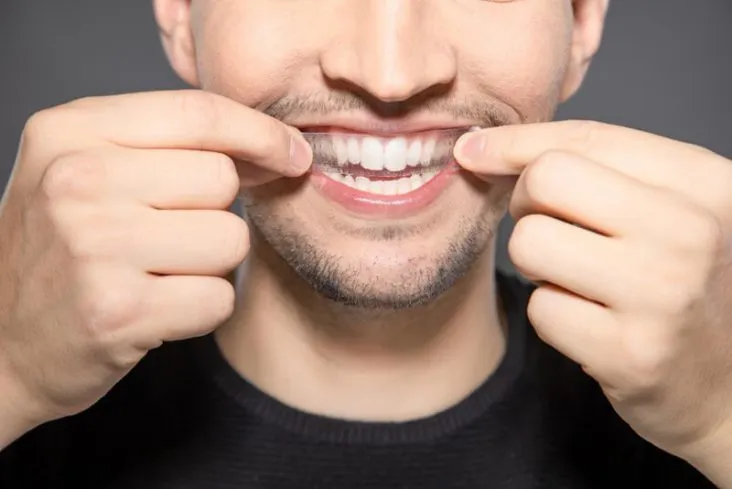
Tooth staining is a complex process influenced by a variety of factors. External stains, which are the most common, are caused by the accumulation of pigments from food, beverages, and tobacco products on the tooth surface. These pigments, known as chromogens, bind to the enamel, leading to discoloration. Internal stains, on the other hand, can result from factors like aging, certain medications, or trauma to the tooth. As we age, the enamel thins, revealing the yellowish dentin beneath. Certain medications, such as tetracycline, can cause intrinsic staining during tooth development. Understanding the cause of the stains is critical, as it can affect the effectiveness of teeth whitening treatments. While whitening strips are very effective on external stains, internal stains can be more challenging to treat and may require professional dental intervention for optimal results. Proper oral hygiene, including regular brushing and flossing, is essential in preventing external stains.
Brushing Before Whitening Strips
Brushing your teeth before applying whitening strips is a common practice that can have both advantages and disadvantages. Brushing before helps remove plaque, food particles, and surface stains that can hinder the whitening agent from effectively reaching the enamel. A clean tooth surface allows the peroxide in the strips to directly contact the stains, thereby maximizing the whitening effect. However, it is important to be cautious about when and how you brush. Using a toothbrush too vigorously or with abrasive toothpaste can irritate the gums and potentially wear down the enamel, increasing sensitivity. Waiting at least 30 minutes after brushing before applying the strips is generally recommended, as this allows the fluoride in toothpaste to bind to the enamel, which can somewhat block the whitening agent. This waiting period ensures the whitening process is not compromised while still providing a clean surface for the strips to work effectively.
The Importance of a Clean Surface
A clean tooth surface is essential for the whitening strips to perform optimally. Plaque and debris can act as a barrier, preventing the whitening agent from fully penetrating the enamel and reaching the stains. By brushing your teeth before applying the strips, you can ensure that this barrier is removed, and the active ingredients can work efficiently. In addition to maximizing the whitening effect, a clean surface can also reduce the likelihood of uneven whitening. Without a thorough cleaning beforehand, the whitening agent may not be able to distribute evenly across the teeth, resulting in blotchy or inconsistent results. This is particularly important when targeting specific stains or areas of discoloration. A pre-whitening brush can create a more consistent application of the whitening agent, leading to a more uniform and aesthetically pleasing outcome.
Potential for Irritation and Sensitivity
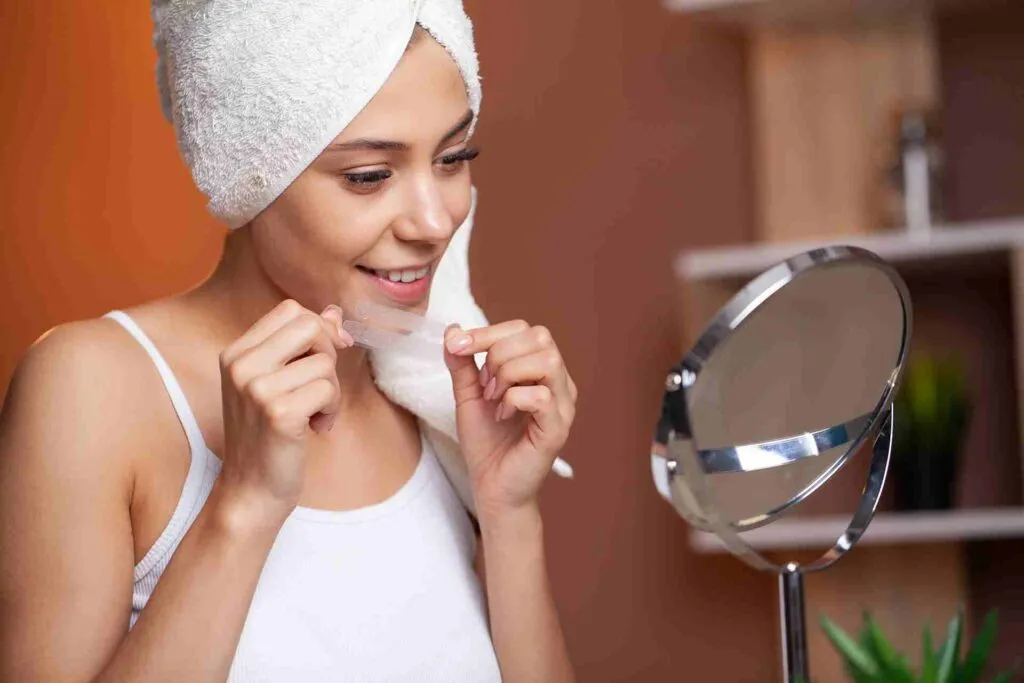
While brushing before whitening strips can improve the whitening process, it’s important to consider the potential for irritation and increased tooth sensitivity. Vigorous brushing, especially with abrasive toothpaste, can wear down the enamel, making your teeth more vulnerable to the effects of the whitening agent. The peroxide in the strips can also irritate the gums, causing redness or discomfort. If you experience increased sensitivity, consider using a toothpaste designed for sensitive teeth or reducing the frequency or duration of the whitening treatments. Always follow the instructions on the whitening strips and consult with your dentist if you experience any adverse effects. Proper technique and the right products are crucial in managing potential irritation or sensitivity, which can arise from the combined actions of brushing and whitening.
Brushing After Whitening Strips
Brushing your teeth immediately after using whitening strips is generally not recommended. The enamel is temporarily more porous after whitening, making it more susceptible to staining and sensitivity. Brushing immediately after can remove the whitening agent before it has fully worked and potentially cause further irritation. It’s generally advised to wait at least 30 minutes to an hour after removing the strips before brushing. This allows the enamel to remineralize and reduces the risk of any adverse effects. It’s also important to use a non-abrasive toothpaste during this time to avoid damaging the enamel. The timing of brushing after whitening strips is a crucial aspect of achieving optimal results and protecting the health of your teeth.
Maintaining Whitening Results
To maintain the results of your teeth whitening treatment, it is important to practice good oral hygiene habits. This includes brushing your teeth twice a day, flossing daily, and using mouthwash. Consider using a toothpaste designed for sensitive teeth and avoiding overly abrasive products. Limiting your intake of staining foods and drinks, such as coffee, tea, and red wine, can also help to preserve the brightness of your smile. Regular dental check-ups and cleanings are also crucial for removing any surface stains and maintaining your teeth’s natural whiteness. By combining these habits with the correct timing of your brushing routine, you can extend the life of your whitening results and enjoy a consistently bright and healthy smile.
Risk of Abrasive Action
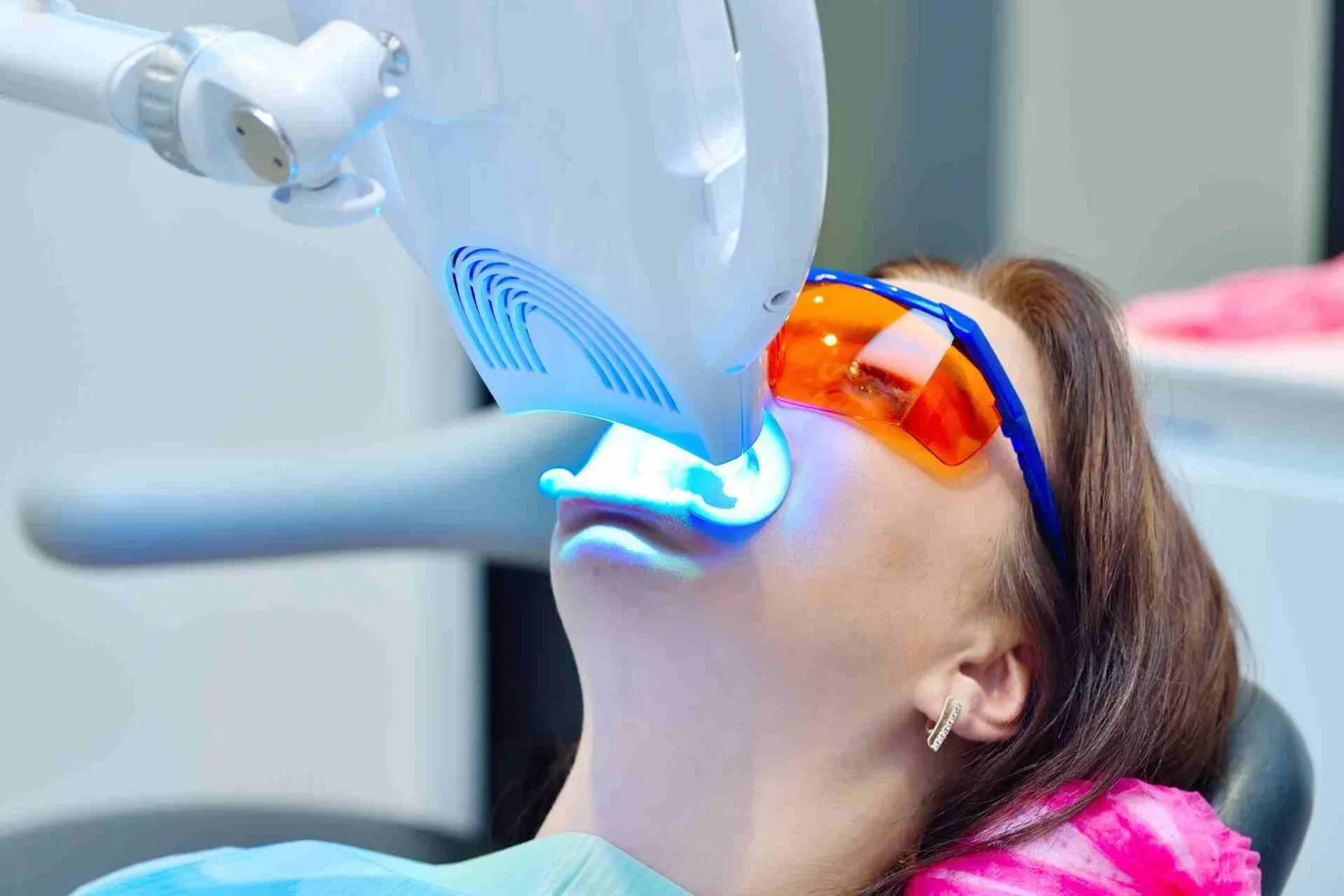
Brushing too soon after using whitening strips can increase the risk of abrasive action on the enamel. The enamel is temporarily weakened during the whitening process, and immediate brushing can strip away some of the surface minerals, leading to increased sensitivity and potential damage. This is particularly true if you use an abrasive toothpaste or brush your teeth too aggressively. To minimize this risk, wait at least 30 minutes after removing the strips before brushing. This gives your enamel time to remineralize, making it less vulnerable to abrasion. When you do brush, use a soft-bristled toothbrush and a non-abrasive toothpaste. Gentle brushing techniques and appropriate product choices are vital in protecting your teeth from damage and preserving their health after whitening treatments.
Optimal Timing and Routine
The optimal timing for brushing in relation to using whitening strips depends on individual preferences and the specific product instructions. Generally, it’s recommended to brush your teeth about 30 minutes before applying the strips to remove plaque and debris. After removing the strips, wait at least 30 minutes to an hour before brushing again. This routine allows for a clean surface for the strips and gives your enamel time to recover after the whitening process. Consistency is key to achieving the best results. Following a regular schedule and adhering to the recommended guidelines will maximize the effectiveness of the whitening treatment and help you maintain a brighter smile. Always read and follow the instructions provided with your whitening strips, as these may vary depending on the product.
Recommendations and Best Practices
To get the most out of your teeth whitening strips, begin by brushing your teeth with a regular toothbrush and toothpaste. Wait at least 30 minutes after brushing before applying the strips. Once the strips are in place, avoid eating, drinking, or smoking. After the recommended time, remove the strips and rinse your mouth. Wait at least 30 minutes to an hour before brushing again. Use a soft-bristled toothbrush and a toothpaste that isn’t overly abrasive. Regular maintenance, along with these tips, is key to achieving and maintaining the desired results. Always read and adhere to the product’s instructions for the best results. Following these best practices can help you achieve a brighter, more confident smile while protecting your teeth’s health.
Consulting with a Dental Professional
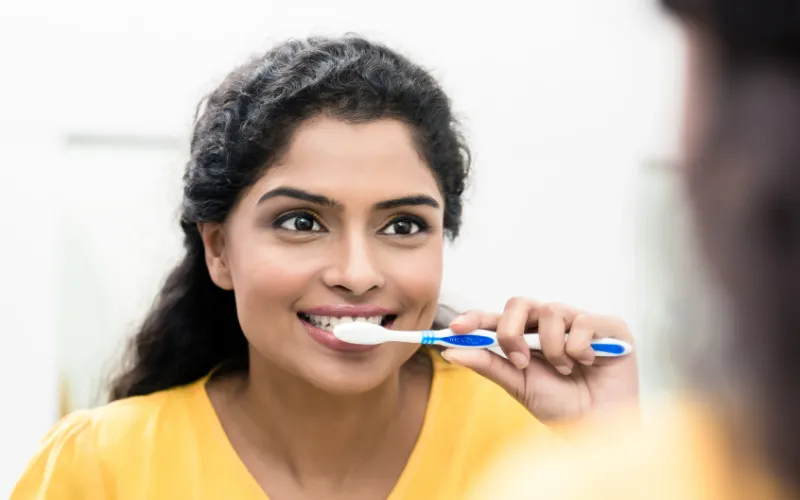
Before starting any teeth whitening treatment, it’s essential to consult with a dental professional. A dentist can assess the condition of your teeth and gums, identify any underlying issues, and determine if whitening strips are the right choice for you. They can also advise on the best practices for using the strips, including the appropriate timing of brushing. A dentist can provide guidance on the most effective whitening products and help you avoid potential risks such as increased sensitivity or gum irritation. They can also offer professional whitening options if necessary. Regular dental check-ups and cleanings are crucial for maintaining optimal oral health and ensuring that your teeth whitening journey is both safe and successful. Your dentist can also help you manage any side effects and provide personalized recommendations for your specific dental needs.
Additional Tips for Teeth Whitening
In addition to understanding the timing of brushing and using whitening strips, there are several additional tips to maximize your results. Ensure that you’re using high-quality whitening strips and following the manufacturer’s instructions. Avoid consuming staining foods and beverages, such as coffee, tea, and red wine, while undergoing the treatment. Consider using a whitening toothpaste or mouthwash to complement the strips. Practice good oral hygiene habits, including regular brushing and flossing, to maintain the brightness of your teeth. Use a straw when drinking beverages that can stain your teeth, and consider using an electric toothbrush for better plaque removal. Be patient, as results may not be immediate. Staying consistent with your routine, and making smart choices, will help you achieve a brighter, more confident smile.
